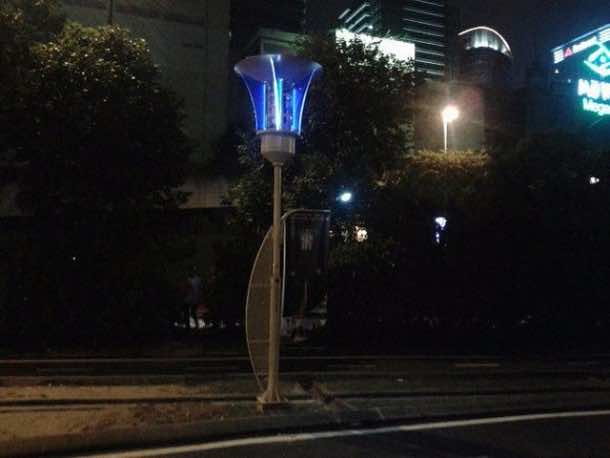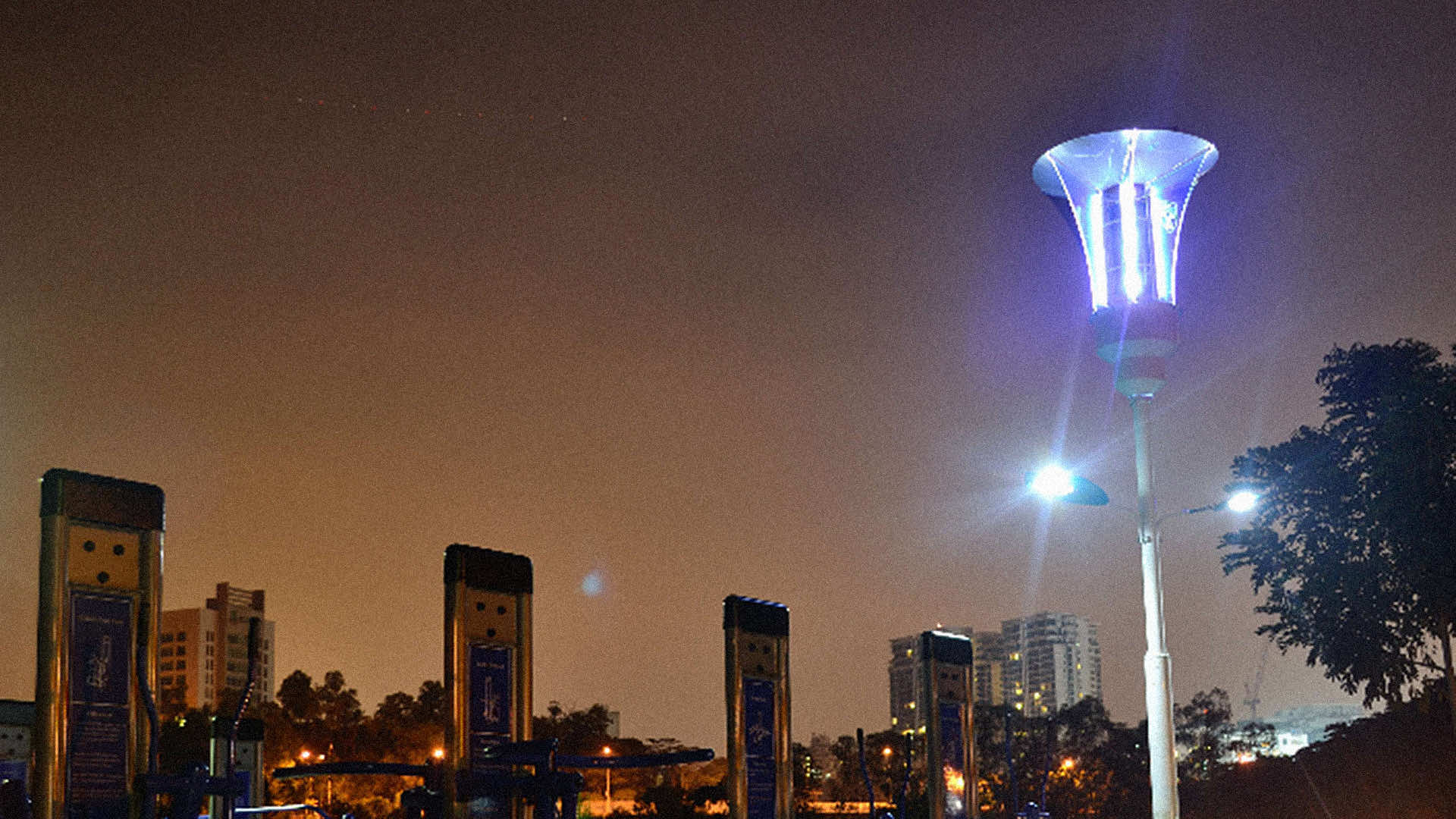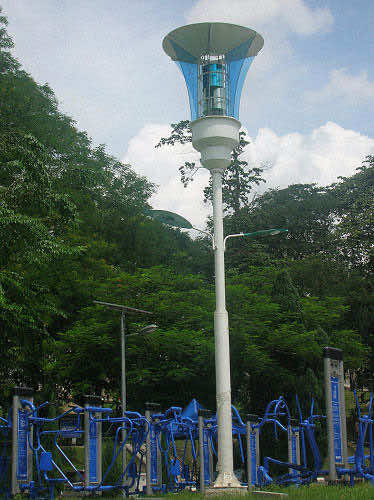I never knew streetlights could provide this level of utility for pedestrians and general population alike. Designed in Malaysia, where the threat of torrential rains and storms is always high, the new experimental streetlights are amazing and will soon replace all the old ones in the areas where the wind and solar energy is enough to take care of their day-to-day operations. Professor Won Tong, who is leading this revolutionary change in the new hardware setup, believes that this kind of innovation is necessary for people who suffer regular flooding and massive mosquito populations leading to Malaria, Dengue and other deadly mosquito-born diseases.


The design of the lamp posts is relatively simple. The solar panels are at the top of each post along with small wind turbines and a container to trap mosquitoes that are attracted here by a combined usage of UV light and Titanium Oxide that produces carbon dioxide. The Carbon Dioxide, in the right concentration, gives the feeling of human presence to the mosquitoes, and when they reach the place, they are sucked inside by a fan and killed in the process. This process can eventually control the population o mosquitoes in the locality and prevent Dengue that killed almost 200 people in Malaysia alone and hospitalized several thousands.

In addition to killing mosquitoes, the lamp can also measure the water level during flood season. All of the electronics are placed at the top of the tower, and the bottom part is all waterproof so that the pole keeps on working even when submerged in water. Also, floods tend to create havoc on the power supply and even major cities experience blackouts. So, these lamp posts can provide you free recharging stations for your smartphones or other devices that you can use to remain in contact with the rest of the world. Eight of these beauties are already installed at the University of Malaysia as part of a pilot project. Now, the researchers would have to market it to the district administration and attract investors!



Invention achi hai but invent kaise karenge
can i make it as a project.wonderful idea
Okay well the CO2 attracts them, NOT the UV light.